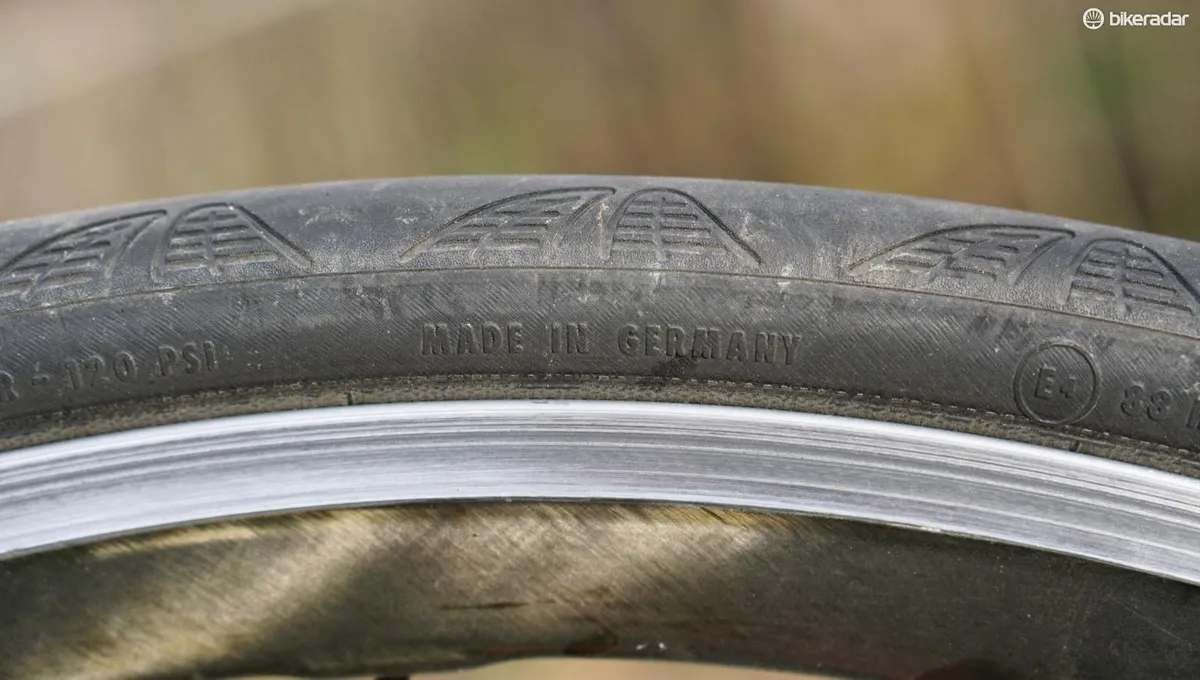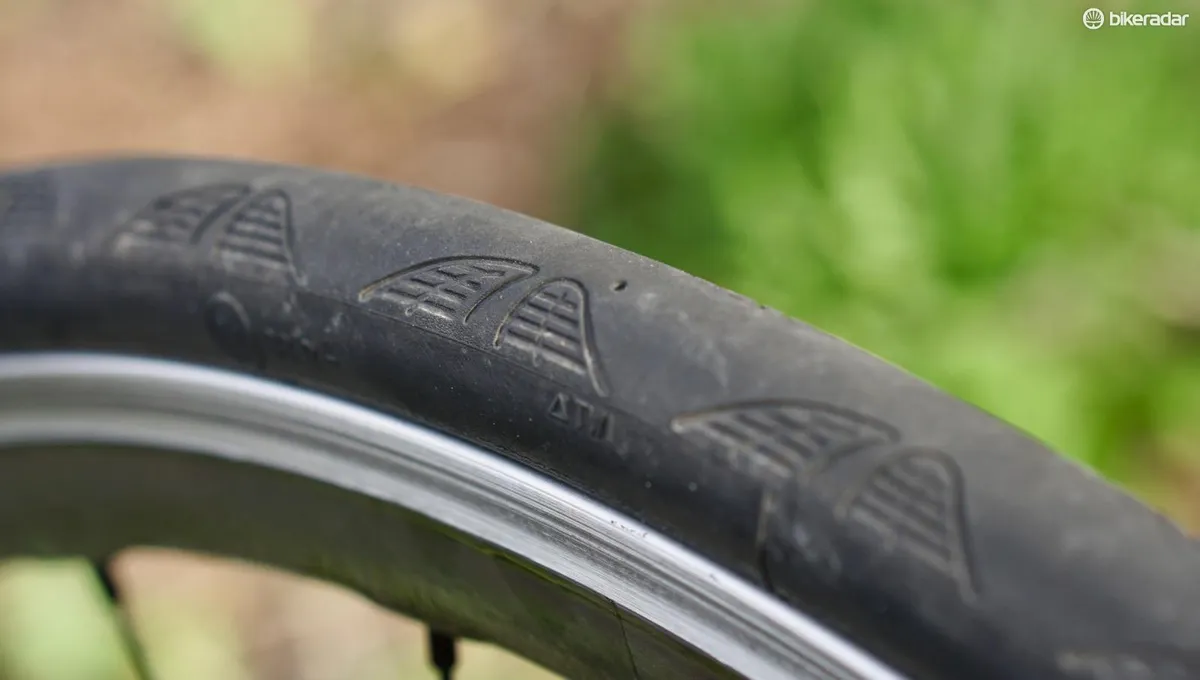Continental’s GP4000 SII isn’t the lightest, the fastest or the most durable clincher on the market. But it is low in weight and rolling resistance, high in grip and longevity, and — notably — often on sale around the world.
- Best road bike tires: what you should look for
- 10 of the best performance road tires lab tested
- Continental Grand Prix 5000 TL tubeless tyre review
Taking all real-world considerations into account, it’s the best all-around performance clincher on the market.
The Grand Prix 4000 has been around since 2005, and Continental improved it a few years ago with the BlackChili compound made in its Germany factory.
Continental claims specific numbers with BlackChili — such as a 26 percent rolling-resistance improvement and a 30 percent grip improvement over activated silica compounds. Can you feel that? Who knows.
We do know that the tire tested fairly well in our Wheel Energy rolling resistance tests. It was off the high mark set by the Schwalbe Pro One Tubeless, and behind the likes of the Michelin Power Competition and Specialized S-Works Turbo Cotton.
Interestingly, the Grand Prix improved relative to a couple others when tested on a rough drum surface versus a smooth drum surface.
- Actual weight: 219g (25mm)
- Available widths: 20, 23, 25 and 28mm
- Measured width (25mm on a 19mm rim): 28mm

But the Continental was only about 1.5 watts slower than most of the other 25mm tires on a perfectly smooth drum, at a 24.5w cost at 40kph compared to most of the other fast tires that were about 23w.
On a rough drum — which we used to emulate normal road conditions, the differences were even smaller. The Conti was measured at 32w at 40kph, dead in the center of the tires tested that ranged from 29.9w (Pro One) up to 36.1 (Clement LCV).
All that to say, you aren’t going to lose your local race because you have Grand Prix 4000 S II tires on your wheels.
More subjectively, but arguably more important, the tires just feel good on the road. Perhaps due to their girthiness (measured 28mm on 19mm internal-width rims), and the 330tpi nylon casing with the BlackChili compound, the Grand Prixs deliver a supple ride.

For puncture resistance, Continental uses a belt of Vectran under the tread. Vectran is a liquid-crystalline polymer that is light and flexible. Most puncture belts are neither of these. The end result is great flat protection in a tire that feels like a race tire, not an all-weather commuter tire.
The Continental Grand Prix 4000 S II comes in 20, 23, 25 and 28mm widths. The 25mm tires, at least, measure wider than listed. I would not recommend using a 20 or 23mm; they have higher rolling resistance and less comfort. So unless you are racing an Olympic time trial where aerodynamic benefit is of the utmost importance, go for the 25 or, if it fits your bike, the 28mm.
Oh, and make sure to get a pair on sale. These tires are almost always on sale.

